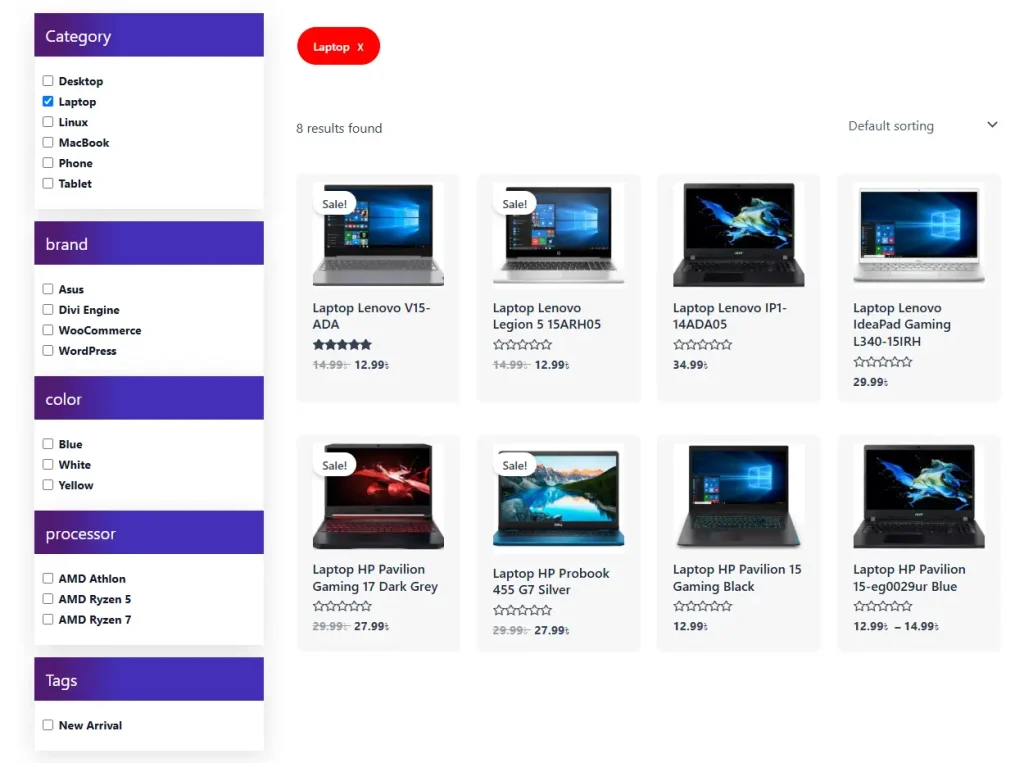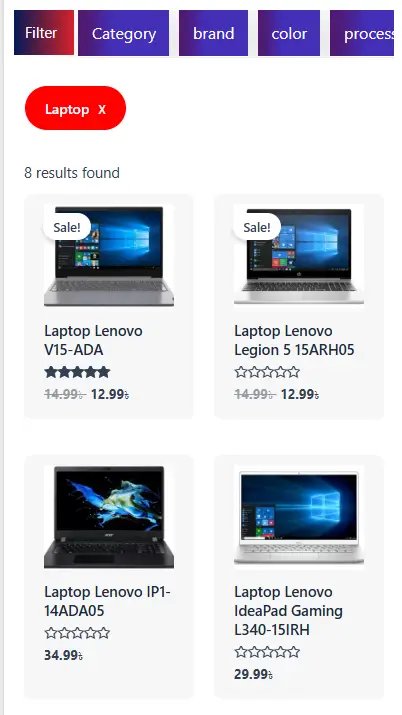Dynamic AJAX Product Filters is designed to be fully responsive, ensuring a seamless experience across all devices. Below are the guidelines and best practices to maintain responsive design for your filters.
1. Overview
Dynamic AJAX Product Filters adapts to various screen sizes, providing users with an intuitive interface whether they’re on a desktop, tablet, or mobile device.
Desktop View
- Description: The desktop view displays filters in a comprehensive layout, allowing users to easily navigate through products.
- Key Features:
- Multiple filter options visible at once.
- Organized layout using grids or flexbox.
- Clear and readable typography.

Mobile View
- Description: The mobile view simplifies the filter layout to enhance usability on smaller screens.
- Key Features:
- Stacked filters for easy scrolling.
- Touch-friendly buttons and sliders.
- Optimized font sizes for readability.

2. Best Practices
Layout
- Flexbox/Grid: Use CSS Flexbox or Grid for layout management, allowing filters to adjust gracefully to screen size changes.
- Media Queries: Implement CSS media queries to adjust styling based on screen size, ensuring elements resize and reposition as needed.
Typography
- Responsive Fonts: Use relative units (like
emorrem) for font sizes to ensure text scales appropriately across devices. - Readability: Maintain high contrast between text and background for better readability, especially on smaller screens.
Buttons and Interactions
- Touch-Friendly: Ensure buttons and interactive elements are large enough for touch interactions on mobile devices.
- Hover Effects: Use hover effects for desktop interactions but ensure they don’t hinder usability on mobile.
Performance
- Optimize Resources: Minimize image sizes and load scripts efficiently to improve loading times across devices.
- Lazy Loading: Implement lazy loading for images and filters to enhance performance, especially on mobile.
3. Testing
- Cross-Browser Testing: Regularly test your filters on various browsers and devices to ensure consistent behavior and appearance.
- User Feedback: Gather feedback from users to identify any usability issues on different devices.
By following these guidelines, you can ensure that the Dynamic AJAX Product Filters provide a responsive and enjoyable user experience across all devices. Regular updates and testing will help maintain optimal performance and usability.